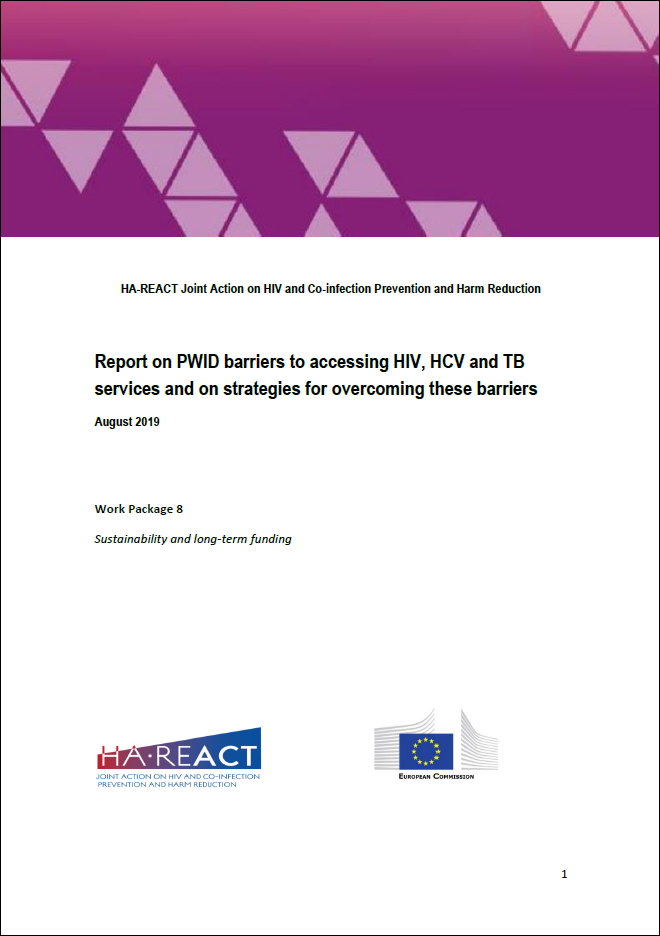Report on PWID barriers to accessing HIV, HCV and TB services and on strategies for overcoming these barriers

People who inject drugs (PWID) have become one of the most vulnerable populations in Europe to not only get infected by HIV and/or hepatitis C (HCV) but also to not be able to access testing, care and treatment services. In order to reach UNAIDS goals to end HIV and WHO goals to eliminate HCV in Europe, we must better address this problem. In many cases harm reduction service providers are the link between PWID and safe and easy access to testing, care and treatment services. Therefore, in 2017 HA-REACT conducted a survey to assess their knowledge about current policies and what they perceive to be the main barriers in their country.
The areas in which the main barriers were reported have been grouped into four categories: (1) Availability, (2) Accessibility, (3) HIV and HCV testing services, and (4) Sustainable funding.
The Joint Action on HIV and Co-infection Prevention and Harm Reduction (HA-REACT) addresses existing gaps in the prevention of HIV and other co-infections, especially tuberculosis (TB) and viral hepatitis, among PWID.
